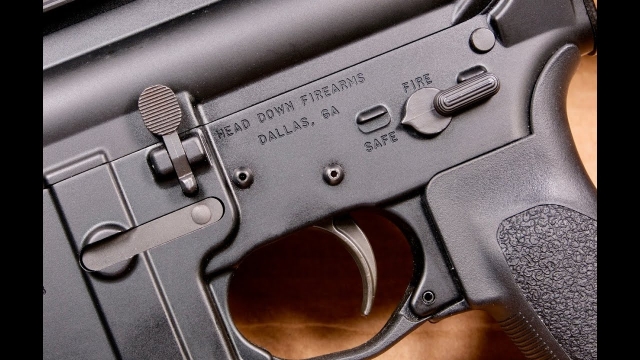Firearms have become an integral part of our modern society, evoking varying emotions and opinions. For some, they represent a means of self-defense and protection, while for others, they symbolize violence and danger. Regardless of personal stance, there is no denying the impact firearms have had on the world.
At the heart of any firearm lies the powerful combination of ammunition and mechanical engineering. The intricacies of designing a firearm capable of harnessing this force is a testament to human ingenuity and technological advancement throughout history. From the simple mechanisms of single-shot muskets to the complex designs of today’s semi-automatic rifles, firearms have evolved alongside our society, adapting to both societal needs and technological advancements. Whether you view them as tools of heroism or objects of fear, it is undeniable that firearms hold a significant place in our collective human story.
History of Firearms
Firearms have a long and storied history, dating back centuries to their earliest prototypes. These remarkable weapons have evolved significantly over time, starting from simple handheld devices that used gunpowder and ignited projectiles. Before the advent of firearms, warfare and hunting relied on more ancient weapons such as spears, bows, and swords.
The origin of firearms can be traced back to ancient China, where a substance called gunpowder was first discovered around the 9th century. Initially used for medicinal purposes, gunpowder’s explosive potential was soon realized, leading to its application in weaponry. Chinese inventors subsequently developed weapons such as fire lances—a kind of flamethrower—and the earliest known handheld firearms, referred to as "fire arrows."
As technologies advanced and knowledge of gunpowder spread, Europe became a significant hub for firearms development. The late Middle Ages witnessed the emergence of handheld firearms, including early muskets and arquebuses. These early firearms were often large and cumbersome, and their mechanisms were prone to misfires and inefficiency.
However, with advancements in metalworking and engineering, firearms gradually became more reliable and accurate. The introduction of rifling—a series of grooves cut into the barrel—improved the weapons’ precision and range. By the 19th century, firearms had undergone a massive transformation, with the advent of breech-loading mechanisms, self-contained cartridges, and the shift from muzzle-loading to metallic cartridges.
The history of firearms is intertwined with countless conflicts and revolutions, shaping the course of warfare and the world itself. From smoothbore muskets used in the American Revolutionary War to the legendary Colt Single Action Army revolver of the Wild West, firearms have played a pivotal role in countless historical events.
In the next section, we will delve into the different types of firearms, exploring their functionalities, ammunition types, and modern-day variations. So, stay tuned as we explore the fascinating world of firearms in greater detail.
Types of Ammunition
When it comes to firearms, one crucial aspect to consider is the wide variety of ammunition available. Understanding the different types of ammunition is essential for any responsible gun owner. Here, we will explore three common types of ammunition used in firearms: bullets, shotshells, and cartridges.
Bullets are the most common type of ammunition used in handguns and rifles. They are essentially projectiles that are propelled by the firearm’s explosive charge. Bullets come in various calibers, which refer to the diameter of the bullet. Common calibers include .22, .45, and 9mm. Each caliber is suitable for different firearms and purposes, ranging from target shooting to self-defense.
Shotshells, on the other hand, are specialized ammunition used in shotguns. Unlike bullets, shotshells contain multiple pellets or BBs rather than a single projectile. The size of these pellets can vary, allowing for different spreads and patterns when fired. Shotshells are commonly used in hunting, as they provide a wider area of impact, increasing the chances of hitting fast-moving targets such as birds or clay pigeons.
Cartridges, often referred to as rounds, are a complete self-contained unit of ammunition. They consist of four main components: a bullet, a propellant (gunpowder), a primer, and a cartridge case. The bullet, as mentioned before, is the projectile, while the propellant is responsible for propelling the bullet forward. The primer is a small explosive charge that ignites the propellant when the gun is fired, initiating the firing sequence. The cartridge case, usually made of brass, holds all these components together. Cartridges are commonly used in handguns and rifles.
Understanding the various types of ammunition is essential for firearm enthusiasts and those interested in the world of guns. By familiarizing ourselves with bullets, shotshells, and cartridges, we can make informed decisions about the type of ammunition best suited for our firearms and shooting purposes. Always remember to prioritize safety and responsible gun ownership.
Safety and Responsibility
Firearms ownership comes with great responsibility, especially when it comes to the safety of those around you. Proper training and education are essential to ensure that firearms are used safely and responsibly.
One crucial aspect of firearm safety is always treating every firearm as if it is loaded, even if you believe it to be unloaded. This mindset helps to prevent accidents and mishandling that can have severe consequences. Ensuring proper storage of your firearms is also paramount, whether it be through the use of gun safes or securing them with cable locks.
Another vital component of responsible firearms ownership is exercising caution when handling ammunition. It is crucial to store ammunition separately from firearms and to handle it with care. Ammunition should be kept in a cool, dry place, protected from potential sources of heat or fire. Additionally, it is essential to follow recommended guidelines for disposing of old or damaged ammunition safely.
Lastly, responsible firearms ownership entails knowing and abiding by all relevant laws and regulations. It is crucial to be aware of the specific regulations regarding firearm ownership, storage, and transportation in your jurisdiction. By being informed about these laws, you can ensure that you are contributing to a safe and responsible firearms community.
Remember, safety and responsibility should always be at the forefront when it comes to firearms ownership. Taking the necessary precautions, receiving proper training, and staying educated will help to minimize risks and create a safer environment for everyone involved.






